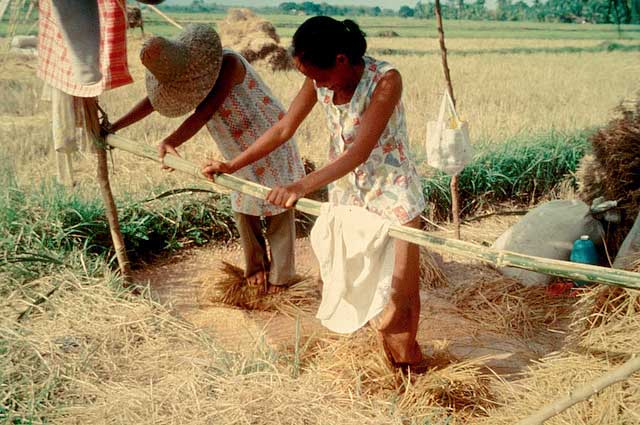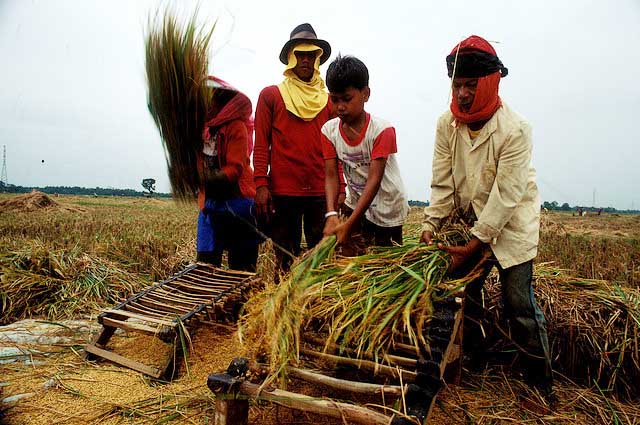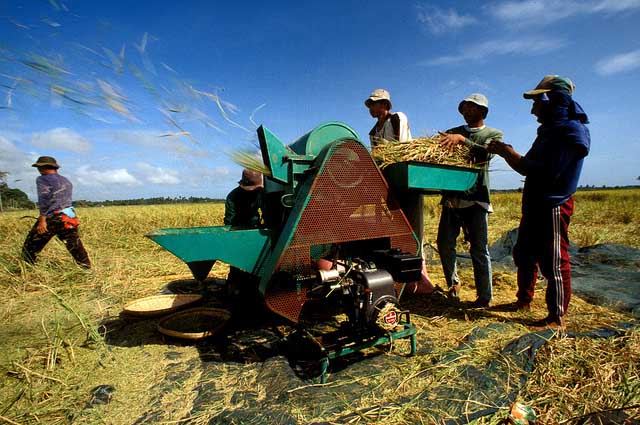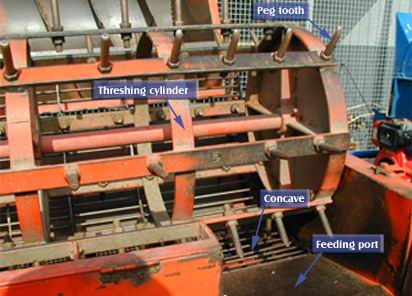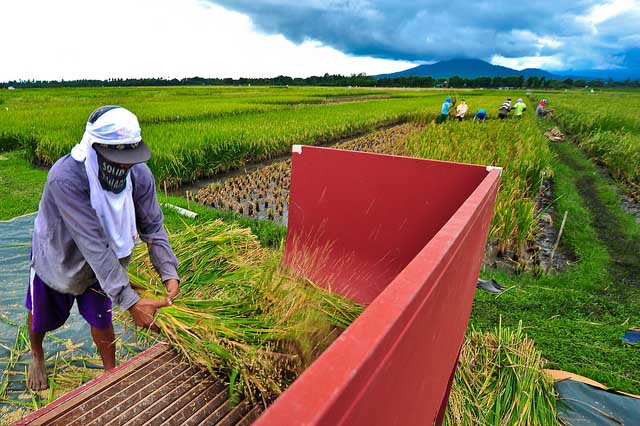Threshing
Threshing is the process of separating the grain from the straw. It can be either done by hand, by using a treadle thresher or mechanized.
Manual threshing
The common method for manual threshing is hand beating against an object, treading, or by holding the crop against a rotating drum with spikes or rasp bars.
Hand beating methods are normally used for threshing rice that easily shatters (i.e., at lower moisture content).
Methods of manual threshing
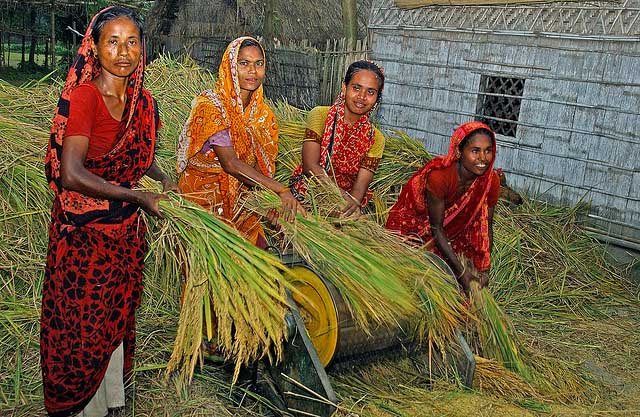 Pedal thresher (recommended best practice)
Pedal thresher (recommended best practice)
The pedal or treadle thresher consists of threshing drum, base, transmission unit and a foot crank. When pedaled, the threshing drum rotates and rice can be threshed when panicles are applied against the threshing drum. Because small straws, chaff, and foreign matter drop along with the threshed grain, whole grains must be separated using a flail, sieve or by winnowing (see section on cleaning).
Trampling
This involves the use of bare feet or animals to thresh the crop. The crop is spread over a mat or canvass and workers trample with their own feet or use their animals. Animal treading or trampling is normally carried out at a designated location near the field or in the village. In some regions, animals have been replaced by tractors. After animal treading, the straw is separated from the grains and cleaning of the grain is done by winnowing, with or without the aid of an electric fan. Losses are high from broken and damaged grains.
Threshing rack
The crop is held by the sheaves and beats it against a slatted bamboo, wooden platform, or any other hard object such as a steel oil drum. This is very labor intensive.
Flail
The use of a flail or stick for threshing the crop is not popular for rice.

